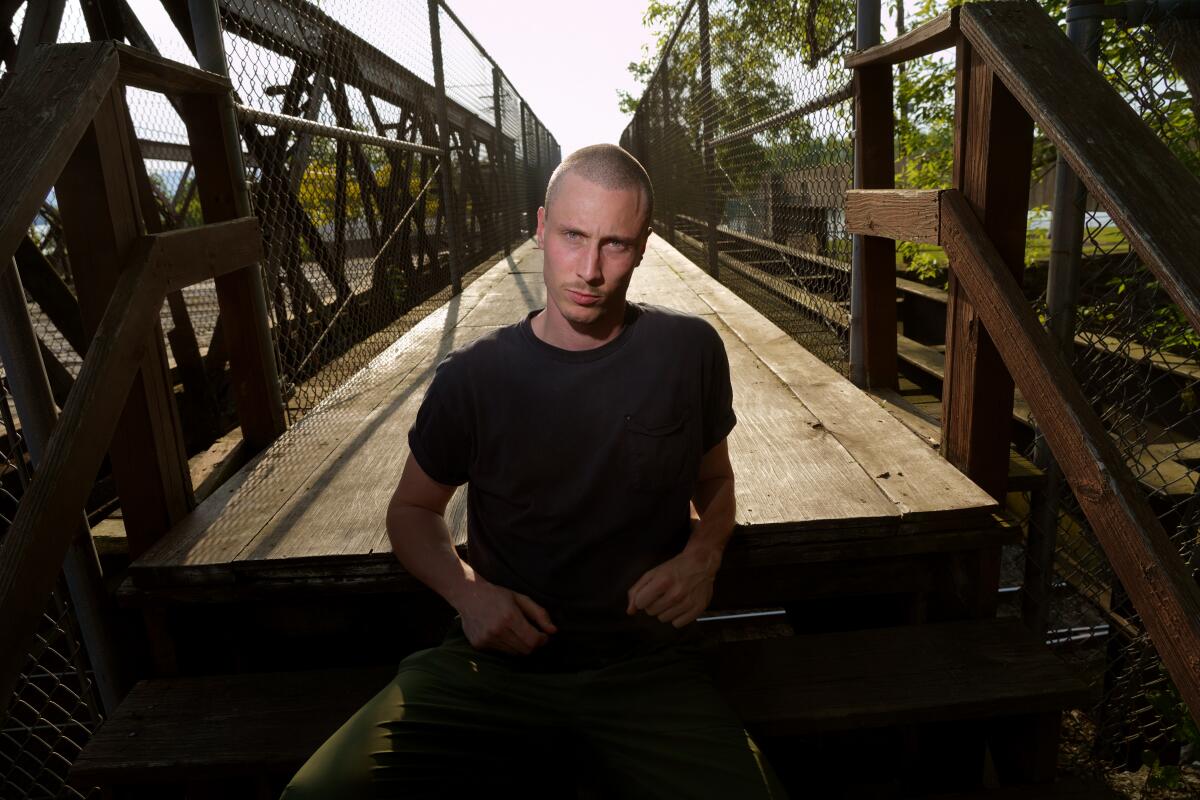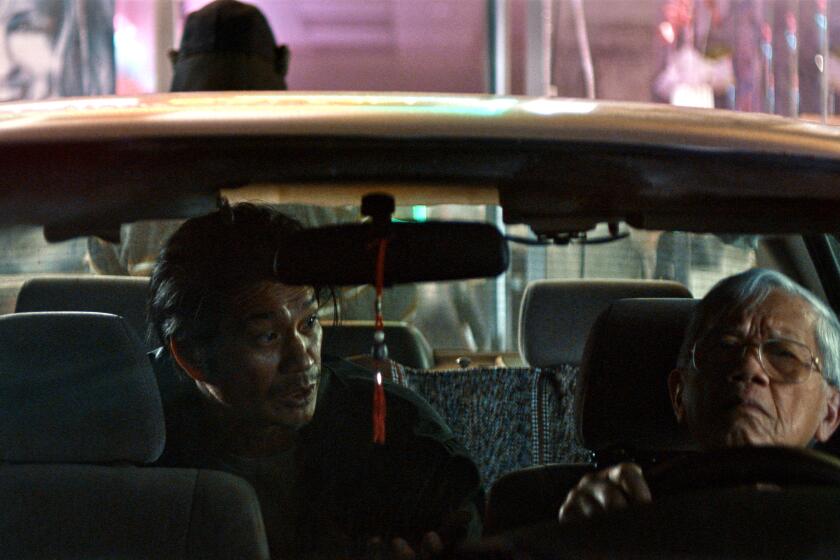Q&A: Filmmaker Theo Anthony discusses the intersection between surveillance and policing

- Share via
On April 20, Derek Chauvin was found guilty of murdering George Floyd. Cities across the nation breathed a sigh of relief upon hearing the verdict, a culmination of the year-long racial reckoning that sparked conversations of systemic racism and injustice in the United States.
The catalyst was a nine-minute-and-29-second video, circulated on social media and rewatched in courtrooms, filmed by Darnella Frazier on her cellphone. Although it was Frazier’s video, not police body cameras, that ultimately held institutions accountable, the latter have been a key part of the larger discussion about public surveillance.
The intersection between camera surveillance and policing caught the attention of filmmaker Theo Anthony for “All Light, Everywhere.” He began working on the documentary after the 2015 killing of Freddie Gray. It is Anthony’s second feature documentary after the 2016 “Rat Film.” The new project, which debuted at Sundance, centers around Axon Company, a private enterprise that claims to be “transforming public safety with technology.”
Opening theatrically on Friday, “All Light, Everywhere” takes viewers through the history of cameras, including early uses, of such as strapping them on pigeons, and the modern state of God’s-eye surveillance that monitors communities of color.
Why did you want to make this documentary?
I think a lot of my work, just going back to working as a journalist and making my very first documentaries, I’ve always been interested in the power dynamics between people behind and in front of the camera. As my career developed, I sort of started to see that this was a way that was also potentially very productive [for] this conversation of who gets to be seen and who gets to do the seeing.
How did you learn about Axon Company?
I was living in Baltimore, and after the killing of Freddie Gray in 2015, it was just this flashpoint of a national global conversation around policing. One of the big things that was being floated was [for] every officer to have a body camera, and I did not know anything about body cameras, didn’t know anything about this company Axon. When I started investigating, to see that Axon was formerly called Taser and that they made these [electroshock] guns, I found that that link between gun and camera compelling and was even more surprised to see that this was a connection going back to the birth of photography and cinema.
The documentary contains screen recordings of you editing or recording behind-the-scenes footage which breaks a fourth wall between the viewers and the documentary. What was your reasoning for that?
There’s a very specific type of documentary that has its roots in these ethnographies that went alongside colonial exploits in the late 19th century. That’s the root of what we think of as the modern documentary, that leads into propaganda films and throughout the world wars, that voice of God. You aren’t actually supposed to stop and think, “Oh, well, who is telling me this information?” So with this film, and especially a film that talks about body cameras whose authority lends itself to the fact that you don’t actually see the person behind the camera, we thought that it was really important to include, as much as possible, myself, without it making it about myself. So we had to include me but not necessarily make it about me.
You made a choice not to show the footage of victims throughout the documentary and to keep it specifically on officers or people selling these products.
I think that there’s a lot of reaction to that where people want to hear more of the specifics with the George Floyd case or hear from people on the other side of surveillance technology. I don’t even want to say victims, it’s almost kind of like, bowing to a certain kind of designation. But I think that there’s a lot of filmmakers, especially white filmmakers, making films about people of color who are most often the targets of this militarized technology. While those tales are really important, they so often limit the portrayal of Black life, of Latinx life, of any other demographic, just to being targets or victims. However important and true that may be, I feel like there’s just such a wide spectrum of representations that need to be put out there. So our response to that was well, OK, here’s this really important thing that is affecting people’s lives. Why don’t we just make this about the perpetrators and not the victims? So the point was to really sort of turn the camera around and really focus on the people behind the camera, and that includes the police, that includes Axon. It includes us sometimes as well.
Did it ever cross your mind the meta-nature of the documentary that’s making an argument about cameras while recording with a camera?
Absolutely. I think that that was like, not even a small part, but actually, maybe, the major part of the film for us was trying to figure out how to create and how to make commentary with the very tools that we’re critiquing. A lot of films or works will frame a subject, and our subject is actually the frame itself. It definitely felt like, over four and a half years, the film was in danger of totally eating its own tail and evaporating.
You include an epilogue of students learning about filmmaking, after deciding to move it from the main piece? Why was that?
This is a film about perpetrators, not victims. Seeing it in that large cut, close to the final cut, we had to take a step back. And this was in conversations with friends and filmmakers and artists and people who saw the film and were reacting to what they saw on screen as well. So I have to credit a lot of my friends who really offered a lot of guidance on this. It was just something that at the end of the day, even if these kids were just this possibility, or this joy, or this hope that was in between the themes of all these kind of violent weapons and histories, we were still placing them at the other end of that. You have a shot of someone pointing a gun, and then you have a shot of a kid like, you know, it’s just montage, right? Like that’s just the way that those images work together; you’re placing that person in the position of being a victim. And that was against what we were trying to do.
More to Read
Only good movies
Get the Indie Focus newsletter, Mark Olsen's weekly guide to the world of cinema.
You may occasionally receive promotional content from the Los Angeles Times.











